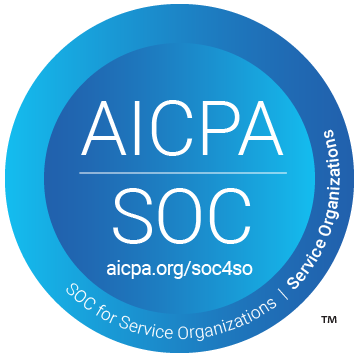When done right, direct mail remains one of the most powerful tools for grabbing attention, driving engagement, and – most importantly – prompting action. In a digital-heavy world, a well-crafted piece of mail stands out in a way that emails and ads can’t. This is why planning a direct mail campaign takes more than just printing and sending. It means understanding the audience, crafting a clear message, picking the right format, and tracking results to keep improving.
Here’s a down-to-earth look at what works -and what to watch out for -when building a successful, results-driven direct mail campaign.
What Problem Are You Solving?
Before diving into design or delivery, take time to really understand the product or service you offer. More importantly, know inside out the problem it solves. This is the foundation of any truly effective direct mail campaign.
When you’re clear on what makes your offer valuable, it’s much easier to craft a message that resonates. Ask: What pain point is being solved? Who experiences that problem most often?
Before diving into design or delivery, take time to really understand the product or service being offered—and more importantly, the problem it solves. This is the foundation of any truly effective direct mail campaign. When you’re clear on what makes your offer valuable, it’s much easier to craft a message that resonates. Ask: What pain point is being solved? Who experiences that problem most often? The best mail marketing campaigns speak directly to a need and position the offer as the solution. For example, a landscaping service isn’t just cutting grass- it’s giving busy homeowners their weekends back. A dental clinic isn’t simply offering checkups – it’s helping families stay healthy and confident.
When planning a direct mail campaign, focus on benefits over features. It’s this kind of relevance that drives stronger response rates and builds a real connection with your audience. Think of a visual that represents the end result your customers will get, or a situation that could spark emotion. And know this: people purchase for emotional reasons – not logic. Even if they don’t realize it.
1. Audience: Reach the Right People
The key edge of direct mail marketing is precise targeting. Unlike digital ads that rely on algorithms and cookies, direct mail campaigns let you target real households with verified data – down to neighborhoods, income brackets, or life events. That means your message lands directly with the people most likely to care.
Who should get your message?
Think beyond the basics. Dig into:
- Life events like moving, marriage, or starting a family
- Income or home ownership
- Proximity to your store or service
- Past buyers or warm leads
To achieve this, you will need a high-quality mailing list or customer data that will let you zero in on ideal recipients. The more relevant the audience, the higher the response rate and the better the return on the marketing campaign.
For example, a local hardware store might target recent homebuyers with direct mail flyers offering discounts on essential tools. The relevance increases the likelihood of action.
2. Message: Be Clear & Compelling
A key phrase in direct mail is “clear before clever.”
With the right audience in mind, the next step is saying the right thing.
When planning a direct mail campaign, keep the message simple, helpful, and action-driven:
- What does the reader want?
- Why should they act now?
- What should they do next?
Stick to one strong call to action (CTA) – something like:
- “Get your free quote today”
- “Save 25% before it ends”
- “Come by to claim your free sample”
Make the CTA pop with a bold design or color. Personalized touches like using the recipients’ name or referring to a recent purchase can boost engagement.
Want better results? Test different messages, layouts, and offers. Even small tweaks can lift the performance of your mail marketing campaign. Consider testing envelope styles, headlines, or even the day your mail lands.
Successful direct mail campaigns rely on strong emotional triggers. When relevant, use urgency, curiosity, or exclusivity. Think: “Don’t miss your invite” or “You’re one of the few selected.”
3. Format & Design: Make It Count
The format of your mailer changes how people interact with it.
Pick the type based on your goal:
- Postcards work well for quick, punchy messages
- Letters feel more personal or official
- Catalogs give space to showcase more products
- Dimensional mail (like small packages) grabs more attention but costs more
Good design is key. Use clean layouts, clear fonts, and strong images. Don’t overcrowd! Leave breathing room for your message, and make sure the CTA is front and center.
Use color and branding consistently. Your design should feel like a natural extension of your business. And always check readability – especially for older audiences.

4. Metrics: Know What’s Working
To improve future campaigns, tracking is essential. Without tracking, there’s no way to know what’s driving results.
Before sending, define success:
- Calls
- Emails
- Site visits
- Store traffic
- Bookings or signups
Then track it with:
- Promo codes
- Custom URLs (PURLs)
- QR codes
These connect your mail campaign to digital activity. Don’t forget to check for indirect responses too, like someone visiting in person after seeing the flyer. That’s where matchback analysis comes in.
Track, learn, and tweak. This is how great direct mail campaigns get better over time. Compare results across different marketing channels like social media, email, and digital marketing to get a full picture of what’s working.
Bonus! Budget: Get the Most from Your Money
Budgeting wisely makes direct mail a powerful tool for any size business.
Here’s how to stretch your marketing dollars:
- Test with a small batch before scaling up
- Choose standard sizes to cut USPS postage costs
- Get your hands on great consumer data
Sometimes, it pays to spend a little more – especially when targeting high-value leads. But even basic direct mail flyers can pack a punch when done right.
Knowing direct mail campaign costs helps match your spending to your goals. Smart planning = Stronger impact.
Also, consider partnering with a direct mail marketing company to streamline production, printing, and mailing services – like Speedeon.
Pitfalls to Avoid When Planning a Direct Mail Campaign
Even with a solid plan, a few common slip-ups can hurt performance:
- Too broad targeting: Reaching everyone = reaching no one
- Unclear offers: If the value isn’t obvious people won’t act
- No tracking: Makes it impossible to learn what worked
- Bad timing: Avoid busy periods unless it’s holiday-focused
- No testing: Without A/B tests, improvement stalls
- Ignoring design: Poor visuals lower trust and response
- No guarantee: Not removing the risk of purchasing or providing value in advance with no strings attached – such as offering a “free quote” or a discount – can intimidate your audience, who may be risk-averse to try out your service or product without a taster or a safe refund policy.
Avoid these mistakes, and you’ll be already ahead of most mail marketing campaigns.
Another pitfall? Not integrating with your other marketing campaigns. Coordinating social media, email, and direct mail marketing can reinforce your message and increase conversions.
Final Thoughts
Planning a direct mail campaign isn’t rocket science, but it does take thought. With clear goals, smart targeting, great design, and solid tracking, direct mail marketing becomes a real growth engine.
Here’s the quick checklist:
- Pinpoint the right people
- Craft one clear message
- Make the design shine
- Track every result
- Spend smart
- Test, learn, and improve
Looking to create and execute a successful direct mail campaign? Then book a one-on-one strategy call with one of our experts. Explore the best way to move your marketing efforts forward. At Speedeon, we specialize in both direct mail marketing AND customer data – let’s chat!

